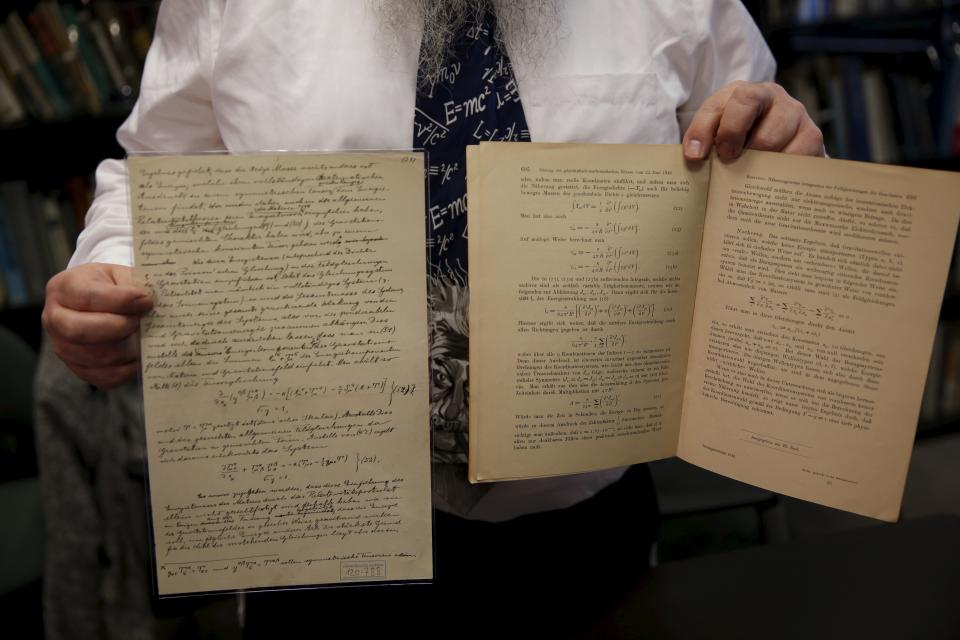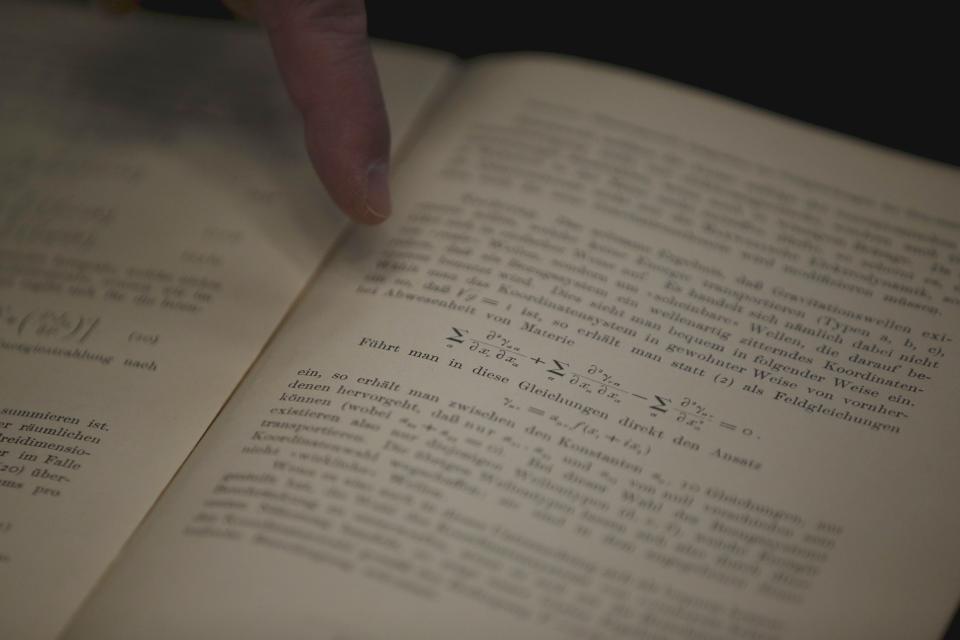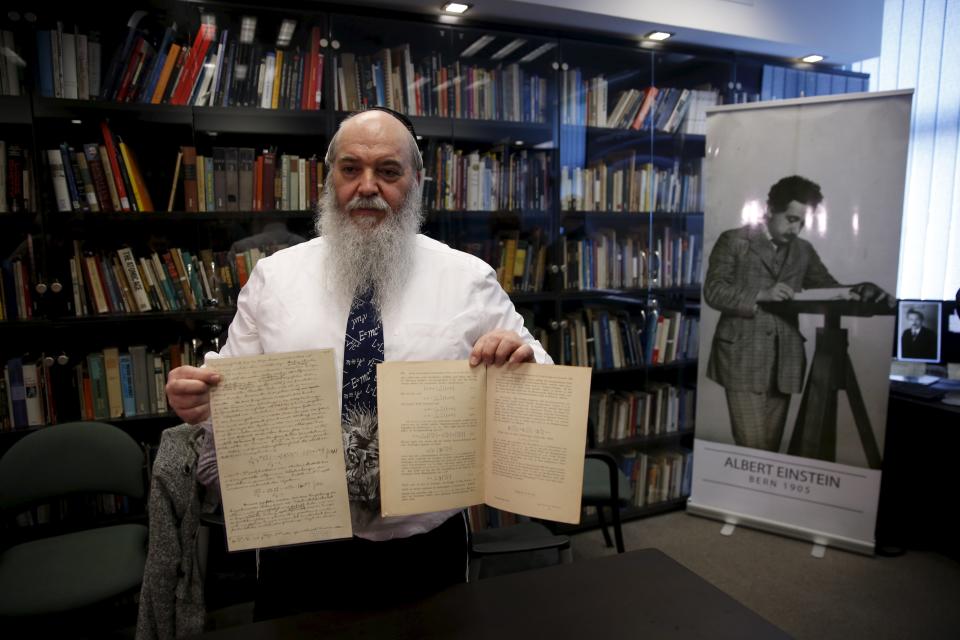Here’s Albert Einstein’s hand-written equations that first predicted an entirely new way to study the universe
Albert Einstein first predicted the existence of gravitational waves in 1916.
Here’s his original hand-written logic (on left), which the genius later converted into a typed manuscript (on right):

REUTERS/Ronen Zvulun
This remarkably preserved piece of history is kept at the Hebrew University of Jerusalem’s Albert Einstein Archives, which contains about 55,000 items of Einstein’s works, over the course of his lifetime.
In fact, Albert Einstein was one of the university’s first Board of Governors — an influential member who helps run a university — and left all of his personal papers, as well as the copyright to them, to the university in his Will.
Here, the curator for Einstein’s archives, Roni Grosz, points to one of the critical equations from Einstein’s General Theory of Relativity, which predicts that two celestial bodies in orbit will generate invisible ripples in spacetime that experts call gravitational waves:

REUTERS/Ronen Zvulun
On Feb. 11, 2016 an international collaboration of scientists working with the Laser Interferometer Gravitational-Wave Observatory (LIGO) announced that 100 years after Einstein’s prediction, they had successfully detected gravitational waves for the first time.
That same day, curator Grosz dug up Einstein’s original manuscripts for gravitational waves, and posed for the camera in celebration of the momentous achievement:

REUTERS/Ronen Zvulun
The LIGO team’s discovery not only confirms Einstein’s prediction, but it also opens a new way to study the universe.
Some of the most powerful events in the universe, like two colliding black holes or a supernova explosion, generate powerful gravitational waves. These events are also some of the most mysterious because astrophysicists don’t understand why black holes collide or what triggers a supernova. Gravitational waves could help solve some of these mysteries.
NOW WATCH: Scientists just discovered 883 galaxies that have been hiding in plain sight
The post Here’s Albert Einstein’s hand-written equations that first predicted an entirely new way to study the universe appeared first on Business Insider.

 Yahoo Finance
Yahoo Finance 
